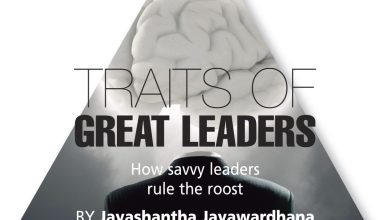ACCOUNTING REVOLUTION
AN SME HERO
BY Priyan Rajapaksa
Back in 2006, a quiet revolution in accounting software was underway in New Zealand. And it turned into a disruption of SME accounting, the likes of which I haven’t ever witnessed in my long years as an accountant. The other software companies are now playing catch up.
I had only set up our accounting practice a year before with my wife and one staff member, who experienced a sudden health issue and wanted to retire.
Being a two person outfit, our preference was to use technology as much as possible in place of human effort. We were using a product that provided client information from the banks but they charged us by the transaction. So the greater the number of transactions, the higher the costs (as well as my blood pressure!).
I could see the transfer of data happening in seconds so the charge seemed unreasonable for the effort involved. But with the company claiming a virtual monopoly, there was no option but to suck the bitter lemon and wince at the taste of the juice.
Then suddenly, there was a wind in the sails of a becalmed yacht with the help of Xero, which involved a fixed fee irrespective of the number of bank accounts or transactions.
So now, our yacht could join the race.
Xero comes with a chart of accounts but can be replaced by one’s own. It also offers the option of an automatic download of information from banks that can be memorised in one step, easy to read screens; and it’s easy to use, and convenient to import and export data.
In addition to the standard accounting reports offered by most software, Xero stands out with its cash summary – a cash flow report that reconciles with bank balances. So if due procedure is followed, there’d be no more bank reconciliations. The bank and ledger balances would always be in sync.
With its software being cloud based, Xero offers the option of working from anywhere. That is ideal for hundreds of thousands of SMEs around the world that attend to their accounting matters at the kitchen table. The average businessperson goes through a similar routine every day, spending money as the day progresses.
Top up the fuel tank, buy your breakfast and groceries, work until lunchtime, buy lunch (sometimes), have a couple of beers on the way home, visit the supermarket or get a takeaway and go home… Xero tracks all of this – and the trail goes cold until it begins the next day.
The memorisation facility enables the person engaged in the accounting to allocate expenses between business and personal items.
Approximately 80 percent of most business expenses are recurrent in nature and therefore, memorisable. So once the details of a transaction are memorised, there’s no need to allocate the expenses again. Xero remembers and brings it up when you need to make the next allocation. For a typical client, the time saved amounts to around 75 percent.
Automatic bank feeds and the facility to memorise transactions easily on screen (on one affordable platform) without having to look elsewhere was a winning proposition. It seemed that the software had been designed to ease the boredom of an accountant who sees the same transactions rumble past his or her eyes and need to be coded into the same ledger account.
Now a longtime fan of it, I think it’s time to acknowledge the debt we owe Xero, without which our practice would not be what it is today. I love how we can set up a client in about five minutes, and be up and running in 10.
Given the option to import client information, we have gathered information going back as far as 10 years. The only limitation seems to be the inability of banks to provide the information in an easily downloadable format.
Xero pioneered the ‘one ledger’ concept in New Zealand and then took it to the rest of the world.
While it is a New Zealand domiciled public technology company, Xero is listed on the Australian Securities Exchange – and it offers a cloud based accounting software platform for small and medium-size businesses. The company has offices in New Zealand, Australia, the UK, the US, Canada, Singapore, Hong Kong and South Africa.
Xero’s products are based on the software as a service (SaaS) model and sold by subscription, managed by the subscriber without long-term contracts. Its products are used in over 180 different countries.
In 2019, Xero announced that it had reached 1.8 million subscribers, employs 2,500 plus people around the world and achieved positive free cash flow for the first time.







